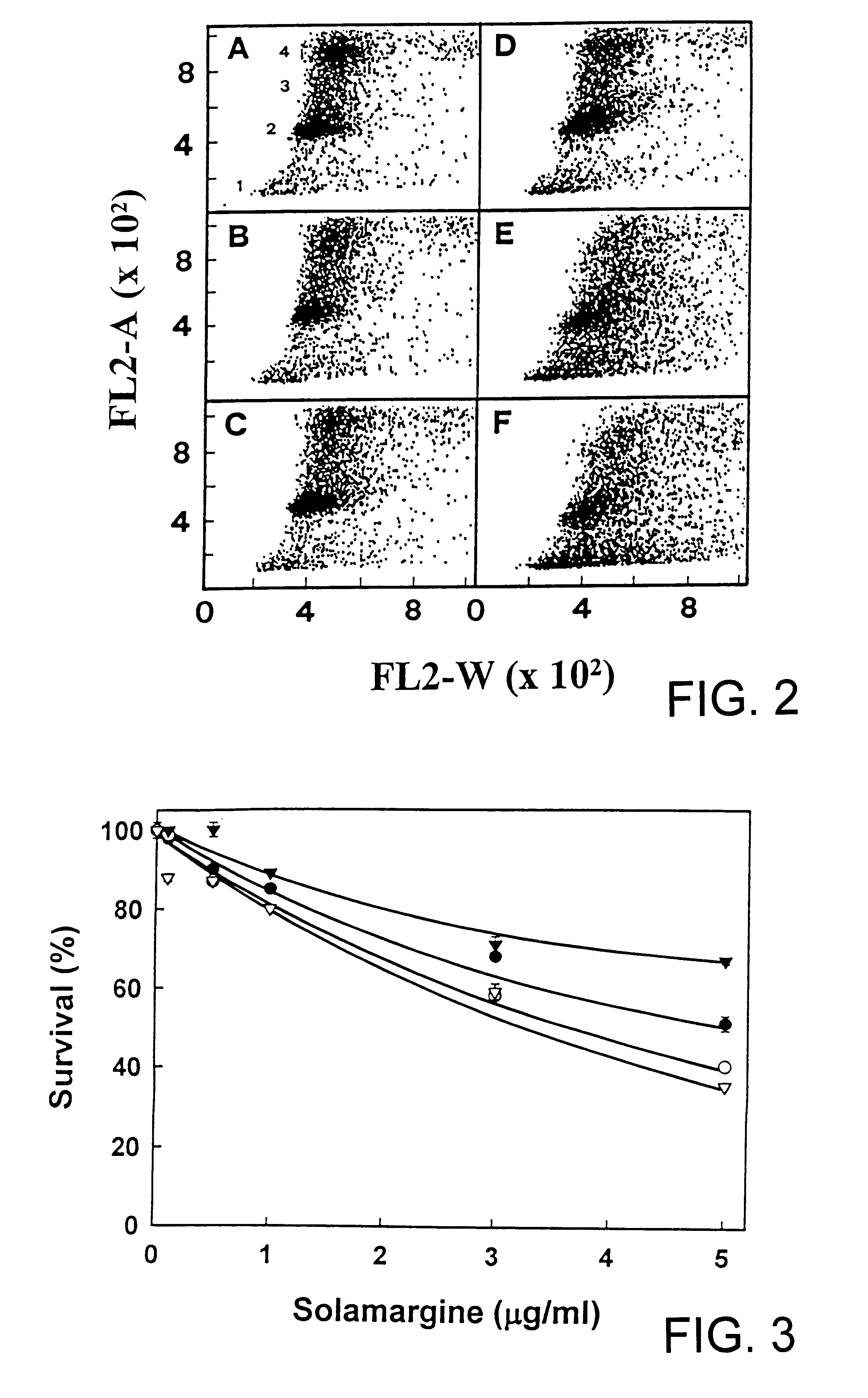Pharmacological composition for treating cancer cells
a technology for cancer cells and pharmaceutical compositions, applied in the direction of biocide, plant/algae/fungi/lichens, biocides, etc., can solve the problems of difficult surgical excise of sclc, serious threat to the health of taiwanese residents by various cancers, and the average age of patients suffering from cancer is gradually decreasing, so as to enhance the effect of effective killing of cisplatin-resistant cancer cells
- Summary
- Abstract
- Description
- Claims
- Application Information
AI Technical Summary
Benefits of technology
Problems solved by technology
Method used
Image
Examples
example
Purification of solamargine:
10 kg of Solanum incanum was provided and cut into pieces. Then the pieces were transferred to a round-bottom flask and extracted with methanol. Removing the residue, the extract was concentrated by reduced pressure. The obtained concentrated product was dissolved in 3% acetic acid solution, and purified by silica gel column based chromatography using chloroform / methanol (4 / 1) as the eluent solution to obtain purified solamargine.
The purified solamargine was analyzed by HPLC under the following recipes:
Column: Merck, LiChroCART RP-18 (5 .mu.m), 4.0.times.125 mm;
Mobile phase: acetonitrile / H.sub.2 O=60 / 40, adjusted to pH 2.5 using phosphoric acid, and filtrated by a 0.45 .mu.m filter;
Flow rate: 1.0 ml / min.;
UV detector: Spectra-Physics UV2000 at .lambda.=220 nm;
Internal standard: indomethacin;
Retention time: 5.62 min.
Cell line:
The cell line used in this example included hepatoma cells (Hep3B, obtained from ATCC) and lung cancer cells (H441, H520 and H661, ob...
PUM
| Property | Measurement | Unit |
|---|---|---|
| pH | aaaaa | aaaaa |
| concentration | aaaaa | aaaaa |
| constant volume | aaaaa | aaaaa |
Abstract
Description
Claims
Application Information
 Login to View More
Login to View More - R&D
- Intellectual Property
- Life Sciences
- Materials
- Tech Scout
- Unparalleled Data Quality
- Higher Quality Content
- 60% Fewer Hallucinations
Browse by: Latest US Patents, China's latest patents, Technical Efficacy Thesaurus, Application Domain, Technology Topic, Popular Technical Reports.
© 2025 PatSnap. All rights reserved.Legal|Privacy policy|Modern Slavery Act Transparency Statement|Sitemap|About US| Contact US: help@patsnap.com


